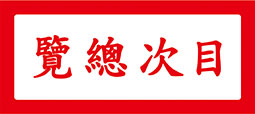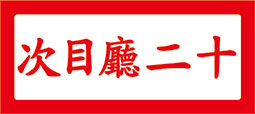On 7th July 1942, the United States Post Office Department issued a postage stamp bearing the portraits of Dr. Sun Yat-Sen, founder of the Republic of China, and President Abraham Lincoln. It’s purpose was to commemorate the fifth anniversary of China’s war against Japanese invasion. The United States Secretary of War Henry L. Stimson wrote a letter to Wang Ch'ung-hui, Secretary-General, Supreme National Defense Council of the National Government of China, to explain the meaning behind the issue of this postage stamp. Some lines are:
“For the first time, an event which occurs in a foreign country is being commemorated on a United States postage stamp. Likewise, for the first time, the picture of a President of a foreign country and words in a modern foreign language are being thus used.”
This is testimony of the international stature of the Republic of China in those years.
Curatorial and Editorial Department
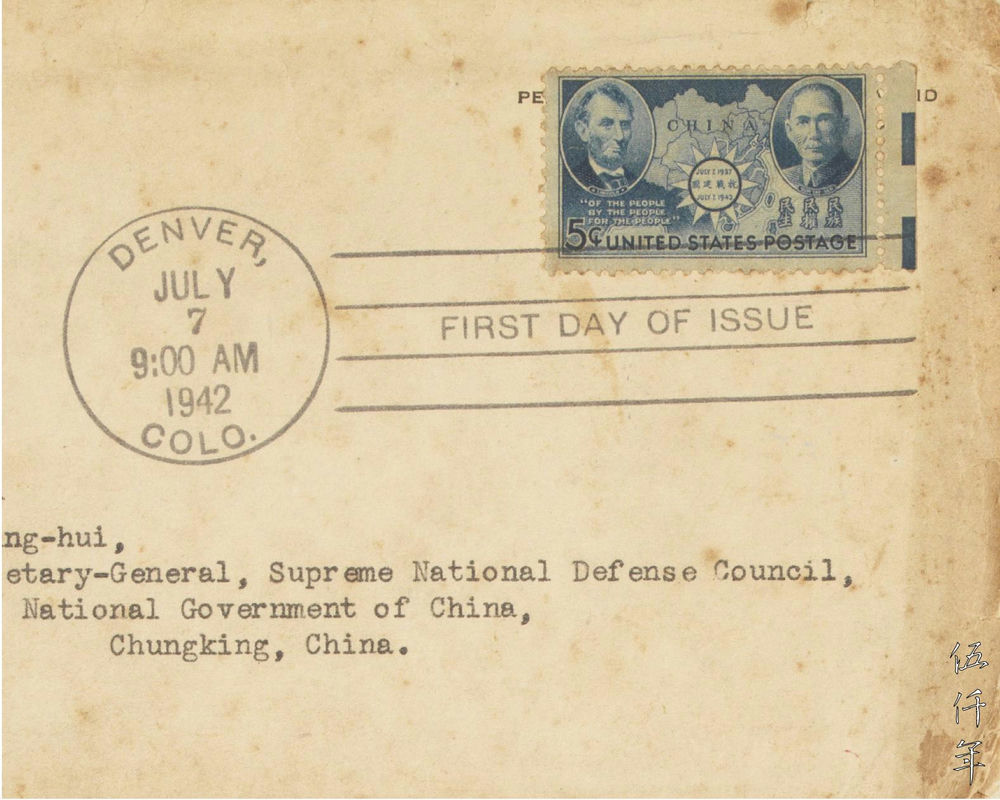
Envelope addressed to Secretary General Wang Ch’ung-hui from Secretary of War Henry L. Stimson. Detail of First Day Cover affixed with postage stamp bearing the portraits of Dr. Sun Yat-sen and President Lincoln, impressed with First Day Cover postmark. Photograph courtesy Ms Wang I-jen and Mr. Wang Shou-cheng
On 7th July 1942, the United States Post Office Department issued a postage stamp bearing the portraits of Dr. Sun Yat-sen, founder of the Republic of China, and President Abraham Lincoln. Its purpose was to commemorate the fifth anniversary of China’s war against Japanese invasion. After the Marco Polo Bridge Incident broke out on 7th July 1937, Generalissimo Chiang Kai-shek led China to war against Japan, hence the United States Post Office Department chose 7th July to issue the stamp. As for the location where the stamp was to be issued, Denver of Colorado was selected. This was to accentuate the fact that Dr. Sun Yat-sen was staying in Denver at the time of the 1911 Revolution, and after hearing news of the Revolution, he hurried back to China to take up the position of acting president. We can recognize that both the date and place of issuing the stamp, were conscientiously chosen by the United States Post Office Department according to the major historic events of the Republic of China.
At the same time, this postage stamp was issued exactly seven months after Japan attacked Pearl Harbour on 7th December 1941. After America declared war on Japan on 8th December 1941, China became an ally of America. By then China had fought against Japanese invasion on her own for four and a half years.
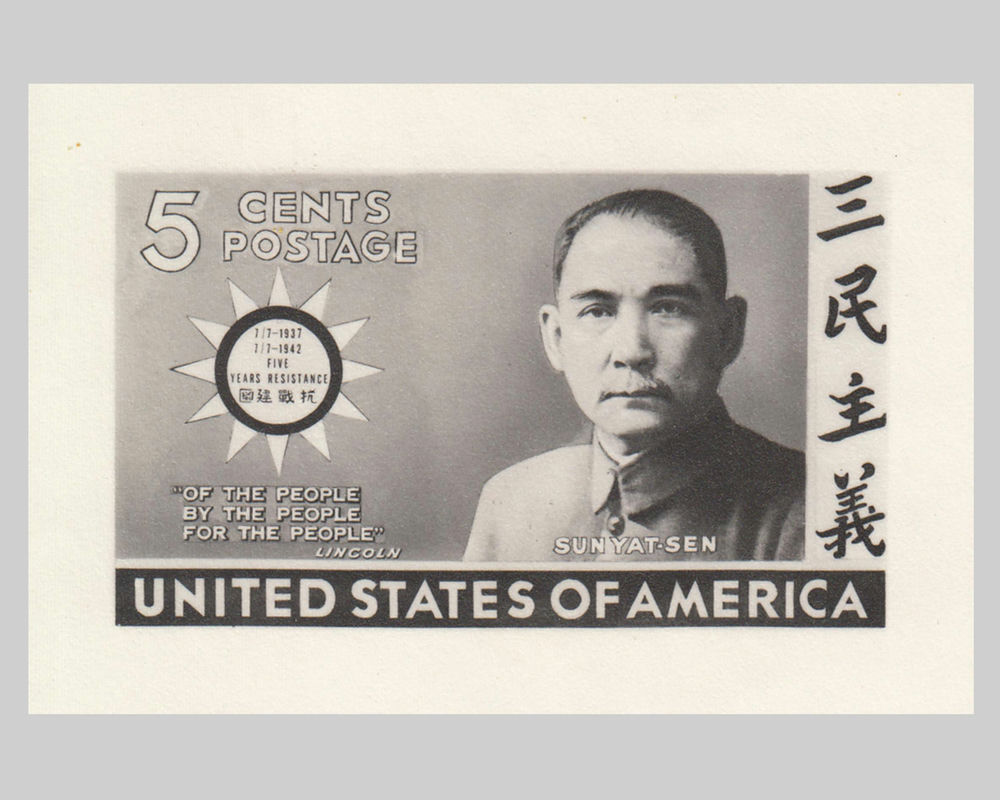
One of the two proposed postage stamp designs in 1942, bearing the portrait of Dr. Sun Yat-sen alone. Photograph courtesy USPS, Postmaster General’s Collection
The United States Post Office Department designed two postage stamps to be considered by the relevant United States government departments. One bearing only the portrait of Dr. Sun Yat-sen, the other bearing the portraits of Dr. Sun Yat-sen and President Lincoln. Since the latter could better draw attention to the Chinese-American ally relationship, it was eventually chosen for production.
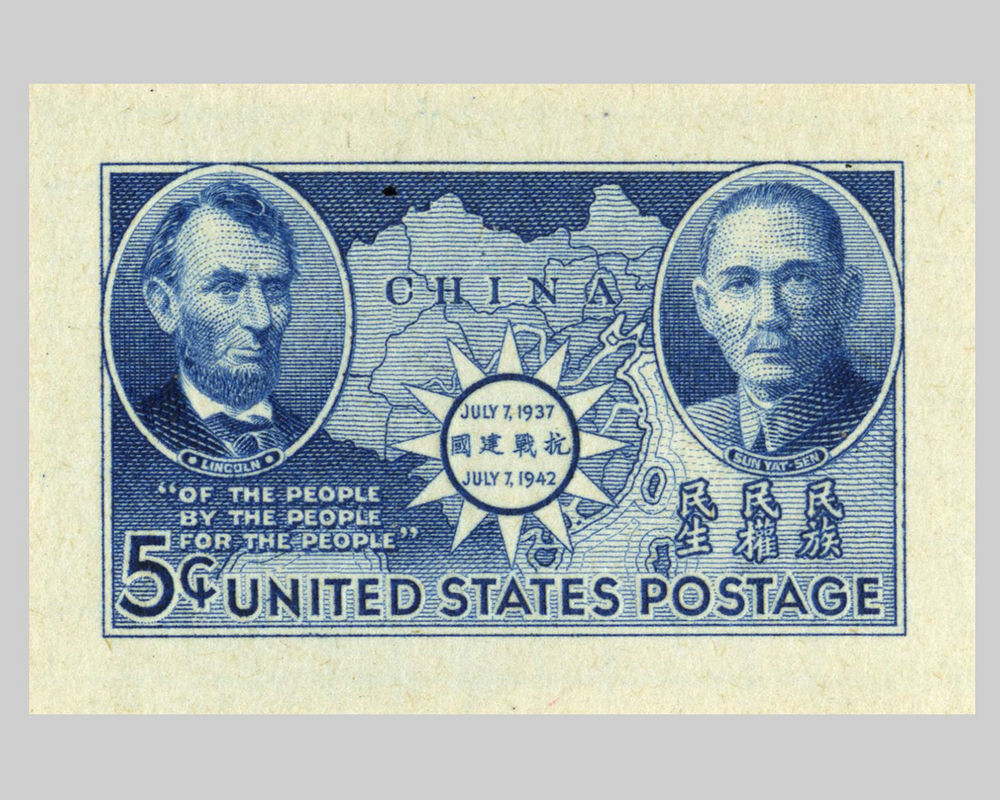
One of the two proposed postage stamp designs in 1942. Postage stamp die proof bearing the portraits of Dr. Sun Yat-sen and President Lincoln. Photograph courtesy USPS, Postmaster General’s Collection
In the middle of the postage stamp bearing the portraits of Dr. Sun and President Lincoln, there is a white sun, the national emblem of the Republic of China. Inside the sun, there are two dates: July 7, 1937 and July 7, 1942, indicating the 5th anniversary of China’s war against Japanese invasion. Between these two sets of dates, there are four Chinese characters 抗戰建國 (Fight Aggression to Build a Nation). In those years, the Nationalist Government appealed to the whole country, to fight Japan, at the same time, to build a new nation, hoping that a modern and democratic China would emerge after the war. These four characters composed this war time slogan. Behind the national emblem there is the map of China. Outer Mongolia was still included as part of Chinese territory then. On the right, underneath the portrait of Dr. Sun, there are three groups of Chinese characters: 民族 Nationalism, 民權 Democracy, 民生 Livelihood of the People. Together they are known as the Three Principles of the People, the ideology of Dr. Sun, and the national spirit of the Republic of China. On the left, underneath the portrait of President Lincoln, there are three groups of English words: Of the People, By the People, For the People. These are words from President Lincoln’s Gettysburg address, also regarded as the national spirit of the United States. We can perceive that the national spirit of the Republic of China, the democratic and constitutional systems she pursues, is very similar to the national spirit and government system of the United States. Historians have long theorized that if China were not embroiled in the Sino-Japanese War, mainland China would never have been communized, and China would have attained a democratic government system eighty years ago.
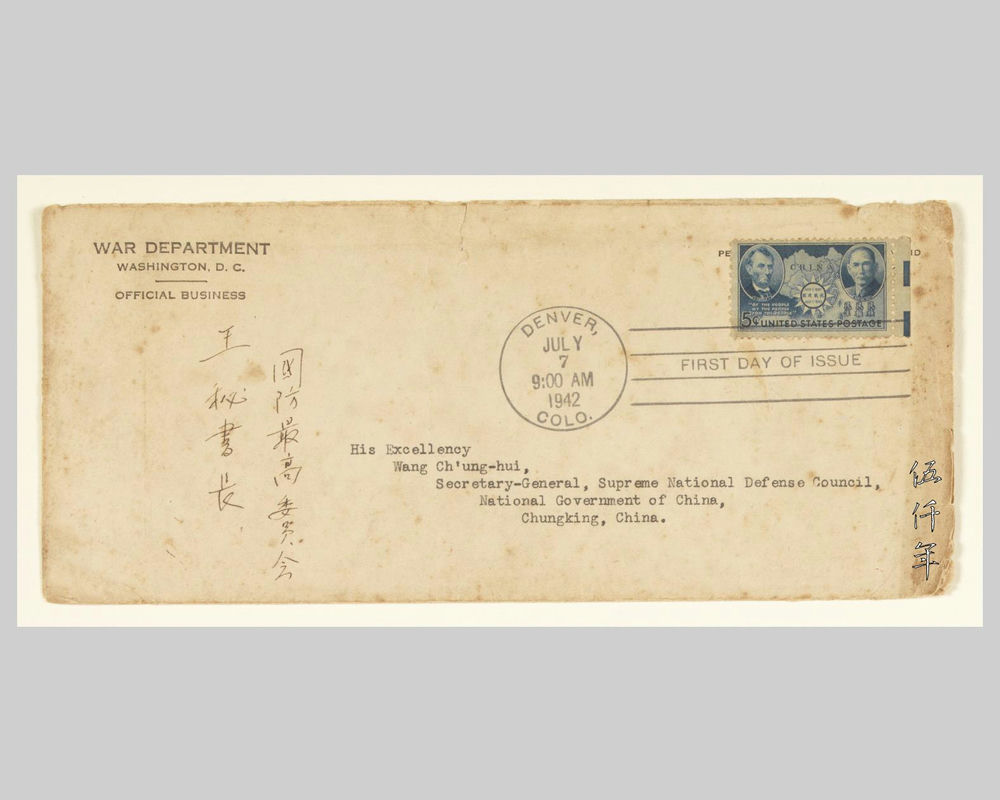
Envelope addressed to Secretary General Wang Ch’ung-hui from Secretary of War Henry L Stimson. Photograph courtesy Ms. Wang I-Jen, Mr. Wang Shou-cheng
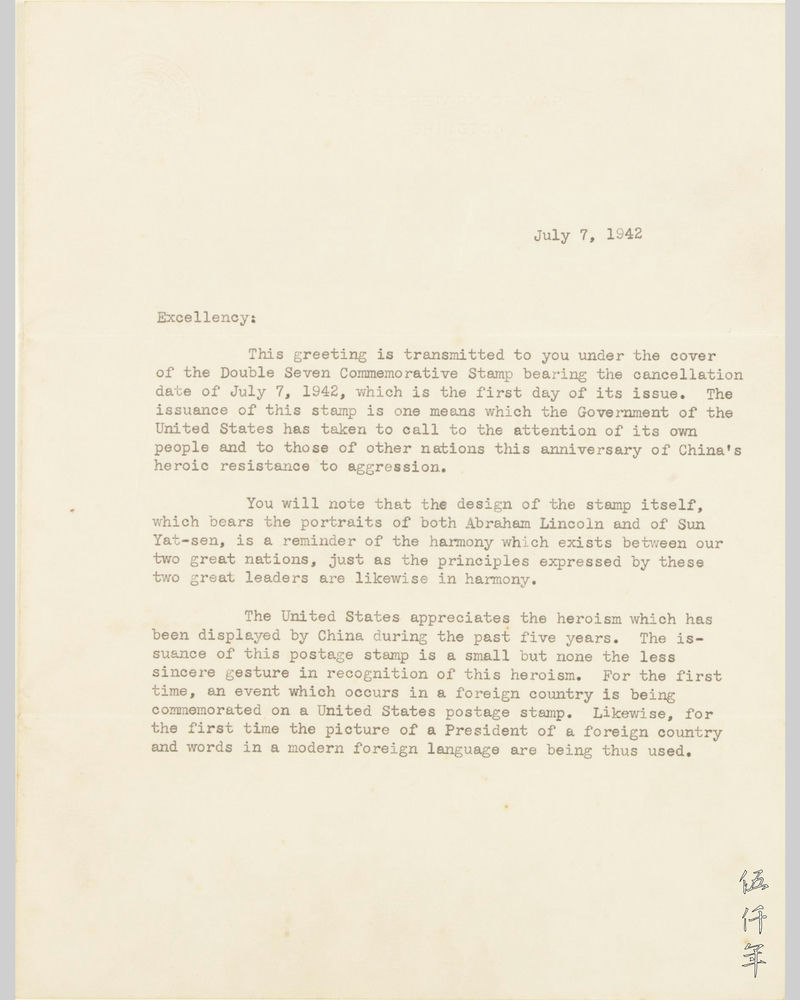
First page of letter addressed to Secretary General Wang Ch’ung-hui from Secretary of War Henry L Stimson. Photograph courtesy Ms. Wang I-jen, Mr. Wang Shou-cheng
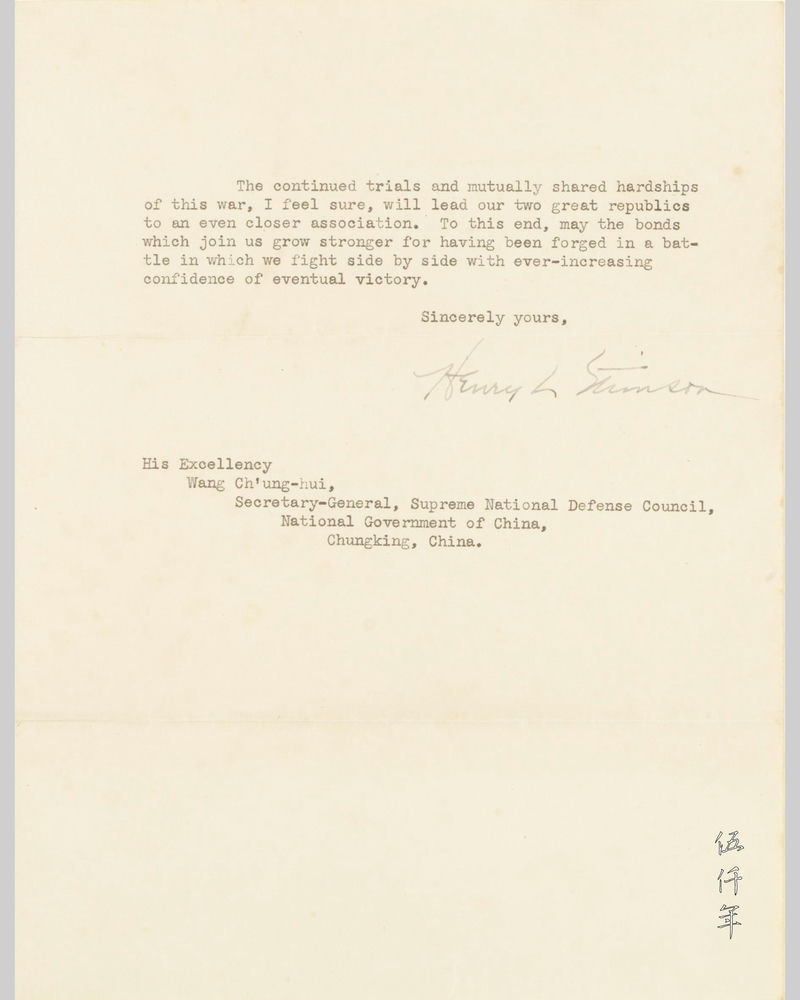
Second page of letter addressed to Secretary General Wang Ch’ung-hui from Secretary of War Henry L. Stimson. Photograph courtesy Ms. Wang I-jen, Mr. Wang Shou-cheng
On 7th July 1942, Henry L. Stimson, secretary of war of the United States, wrote a letter to Wang Ch’ung-hui, secretary general of the Supreme Council of National Defense of the Chinese Kuomintang, to explain the meaning behind the issue of this postage stamp. On the envelope, besides affixing this stamp, was impressed a first day cover postmark: Denver, July 7, 9:00 AM, 1942, COLO. Stimson’s letter reads:
“July 7, 1942
Excellency:
This greeting is transmitted to you under the cover of the Double Seven Commemorative Stamp bearing the cancellation date of July 7, 1942, which is the first day of its issue. The issuance of this stamp is one means which the Government of the United States has taken to call to the attention of its own people and to those of other nations this anniversary of China's heroic resistance to aggression.
You will note that the design of the stamp itself, which bears the portraits of both Abraham Lincoln and of Sun Yat-sen, is a reminder of the harmony which exists between our two great nations, just as the principles expressed by these two great leaders are likewise in harmony.
The United States appreciates the heroism which has been displayed by China during the past five years. The issuance of this postage stamp is a small but none the less sincere gesture in recognition of this heroism. For the first time, an event which occurs in a foreign country is being commemorated on a United States postage stamp. Likewise, for the first time the picture of a President of a foreign country and words in a modern foreign language are being thus used.
The continued trials and mutually shared hardships of this war, I feel sure, will lead our two great republics to an even closer association. To this end, may the bonds which join us grow stronger for having been forged in a battle in which we fight side by side with ever-increasing confidence of eventual victory.
Sincerely yours,
Henry L . Stimson
His Excellency
Wang Ch’ung -hui,
Secretary-General, Supreme National Defense Council,
National Government of China,
Chungking, China.”
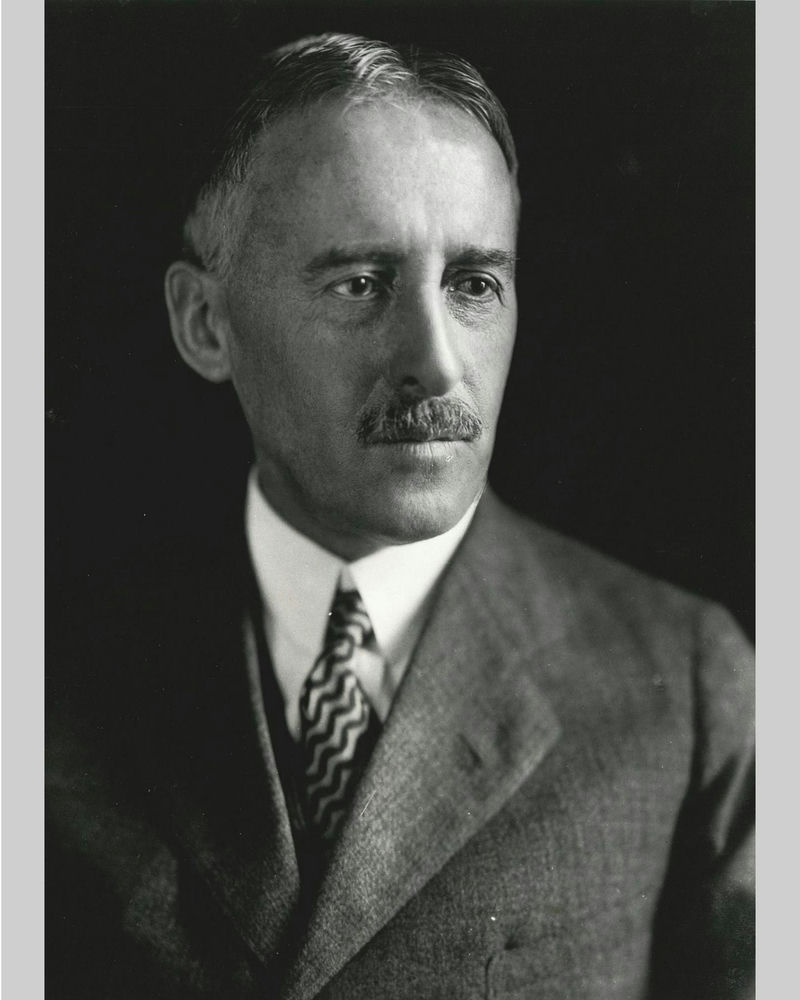
Portrait of Henry Lewis Stimson
Henry Lewis Stimson (1867-1950) was born in New York, he was an American statesman. In 1888 he graduated from Yale University, and in 1890 he graduated from Harvard Law School. In 1906 he was appointed U.S. attorney for the Southern District of New York. In 1910, he was defeated as Republican candidate for governor of New York. In the following year, he was appointed secretary of war. In 1914, with the outbreak of the First World War, Stimson served the regular U.S. Army in France as an artillery officer, in 1918 he was promoted to colonel, and in 1922 he was promoted to brigadier general in the Organized Reserve Corps. From 1927 to 1929, he was governor-general of the Philippines, and in 1929 he was secretary of state . From 1937 to 1939, he was president of the New York City Bar Association. From 1940 to 1945, he was secretary of war, and an important military and political figure during the Second World War. He wrote Active Service in Peace and War.
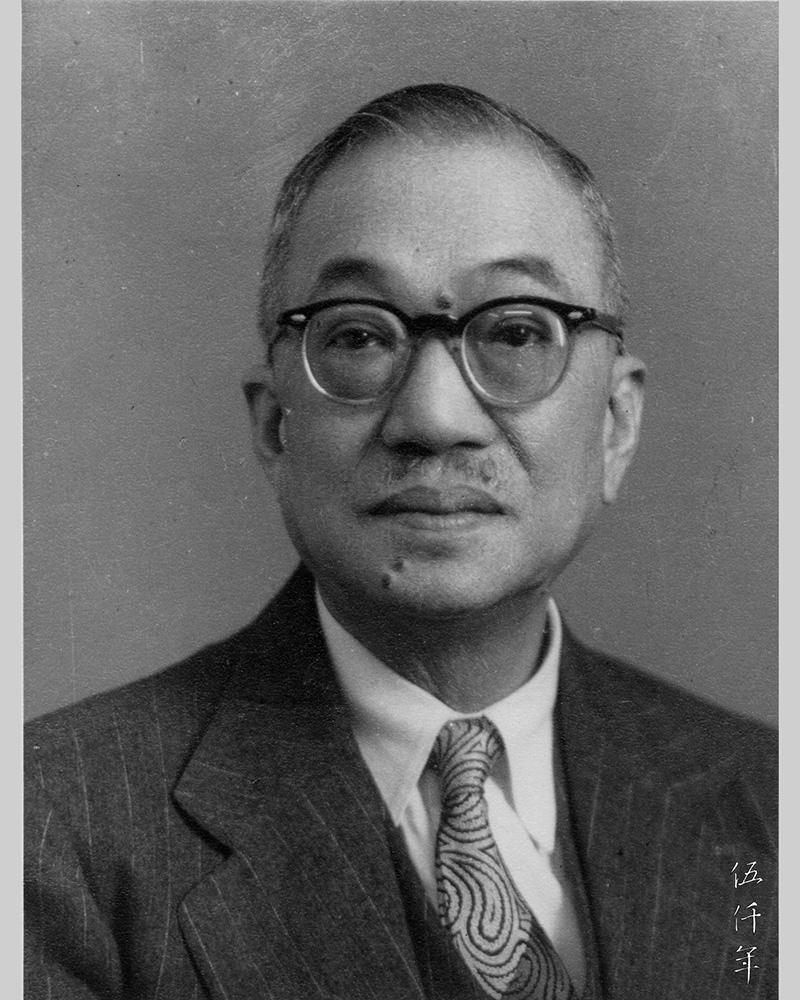
Portrait of Wang Ch’ung-hui. Photograph courtesy Ms. Wang I-Jen and Mr. Wang Shou-cheng.
It has now been eighty years since 1942. Time relentless, flows by like water. There is much cause for repine. The Republic of China restored her international prestige during the war against Japan, from being partitioned by foreign powers, to the elevated status as one of the four major Allied nations. Examining this postage stamp bearing the portraits of Dr. Sun and President Lincoln, it is further testimony of the international stature of the Republic of China in those years.
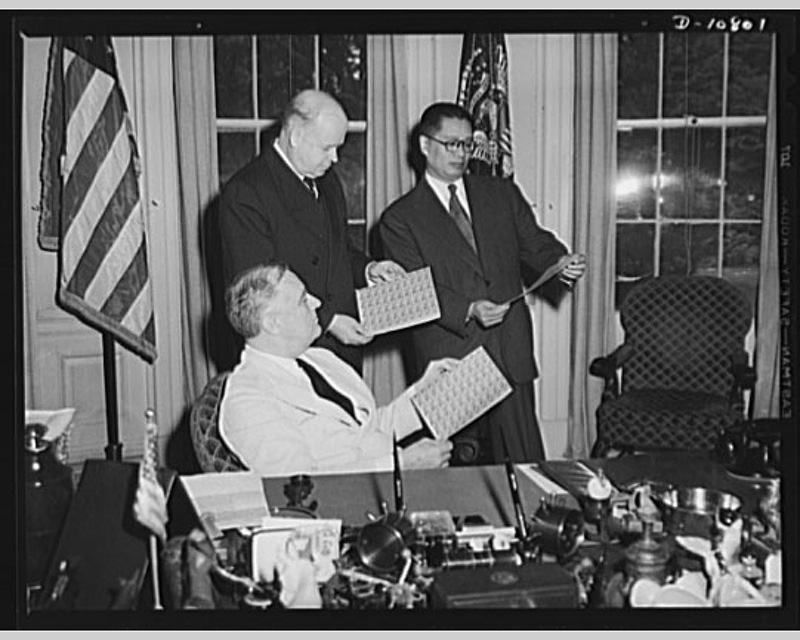
Foreign minister Soong Tse-vung of the Nationalist government (right), the United States Postmaster General Frank Comerford Walker (left), and President Franklin Roosevelt (seated), perusing the stamp sheets bearing the portraits of Dr. Sun and President Lincoln. Photograph courtesy Library of Congress
